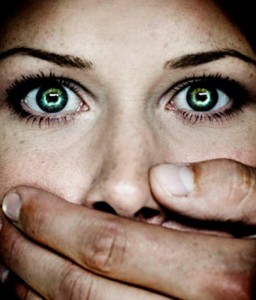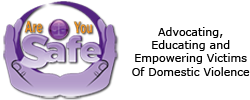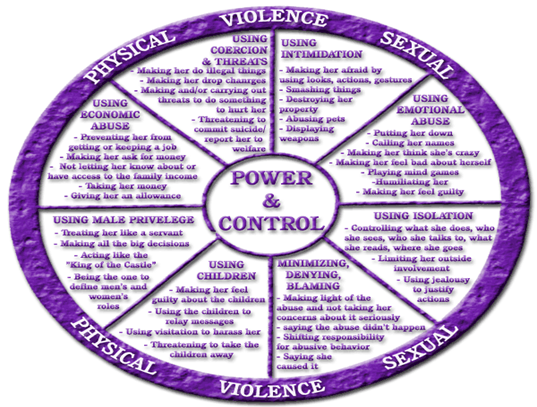 What is it?
What is it?
Domestic violence can be defined as a pattern of abusive behavior in any relationship that is used by one partner to gain or maintain power and control over another intimate partner.
Domestic violence can be physical, sexual, emotional, economic, or psychological actions or threats of actions that influence another person. This includes any behaviors that intimidate, manipulate, humiliate, isolate, frighten, terrorize, coerce, threaten, blame, hurt, injure, or wound someone.
Physical Abuse: Hitting, slapping, shoving, grabbing, pinching, biting, hair-pulling, biting, etc. Physical abuse also includes denying a partner medical care or forcing alcohol and/or drug use.
Sexual Abuse: Coercing or attempting to coerce any sexual contact or behavior without consent. Sexual abuse includes, but is certainly not limited to marital rape, attacks on sexual parts of the body, forcing sex after physical violence has occurred, or treating one in a sexually demeaning manner.
Emotional Abuse: Undermining an individual’s sense of self-worth and/or self-esteem. This may include, but is not limited to constant criticism, diminishing one’s abilities, name-calling, or damaging one’s relationship with his or her children.
Economic Abuse: Making or attempting to make an individual financially dependent by maintaining total control over financial resources, withholding one’s access to money, or forbidding one’s attendance at school or employment.
Psychological Abuse: Causing fear by intimidation; threatening physical harm to self, partner, children, or partner’s family or friends; destruction of pets and property; and forcing isolation from family, friends, or school and/or work.
Domestic violence can happen to anyone regardless of race, age, sexual orientation, religion, or gender. Domestic violence affects people of all socioeconomic backgrounds and education levels. Domestic violence occurs in both opposite-sex and same-sex relationships and can happen to intimate partners who are married, living together, or dating.
The Cycle of Violence
Domestic violence not only affects those who are abused, but also has a substantial effect on family members, friends, co-workers, other witnesses, and the community at large. Children, who grow up witnessing domestic violence, are among those seriously affected by this crime. Frequent exposure to violence in the home not only predisposes children to numerous social and physical problems, but also teaches them that violence is a normal way of life – therefore, increasing their risk of becoming society’s next generation of victims and abusers.
Sources: National Domestic Violence Hotline, National Center for Victims of Crime, and WomensLaw.org.
Warning Signs for Domestic Violence
Unknown Pasts/No Respect for Women: Secretive about past relationships; refers to women with negative remarks, etc.
More Warning Signs
1. Was or is abused by a parent.
2. Grew up in a home where an adult was abused by another adult.
3. Gets very serious with boyfriends/girlfriends very quickly – saying “I love you” very early in the relationship, wanting to move in together or get engaged after only a few months, or pressuring partner for a serious commitment.
4. Comes on very strong, is extremely charming and an overly smooth talker.
5. Is extremely jealous.
6. Isolates partner from support systems – wants partner all to themselves, and tries to keep partner from friends, family or outside activities.
7. Attempts to control what partner wears, what she/he does or who she/he sees.
8. Is abusive toward other people, especially mother or sisters if he is a male.
9. Blames others for one’s own misbehavior or failures.
10. Has unrealistic expectations, like expecting partner to meet all of ones needs and be the perfect partner.
11. Is overly sensitive – acts ‘hurt’ when not getting one’s way, takes offense when others disagree with an opinion, gets very upset at small inconveniences that are just a normal part of life.
12. Has ever been cruel to animals.
13. Has ever abused children.
14. Has ever hit a boyfriend or girlfriend in the past.
15. Has ever threatened violence, even if it wasn’t a serious threat.
16. Calls partner names, puts him/her down or curses at him/her.
17. Is extremely moody, and switches quickly from being very nice to exploding in anger.
18. If a male, believes women are inferior to men and should obey them.
19. Is intimidating, for example using threatening body language, punching walls or breaking objects.
20. Holds partner against his/her will to keep him/her from walking away or leaving the room.


